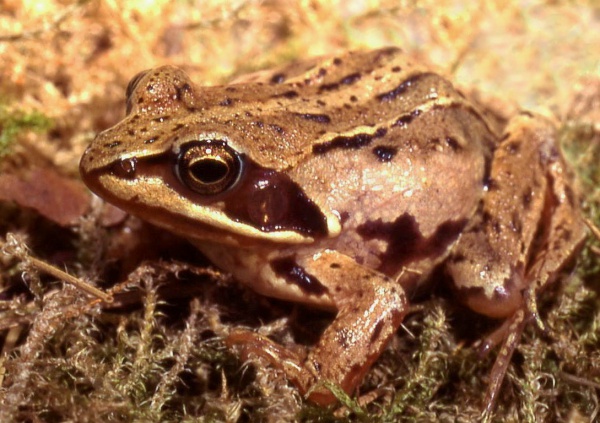Facts About Moor frog
The moor frog, or *Rana arvalis*, is a semiaquatic amphibian belonging to the Ranidae family, commonly found throughout Europe and Asia. These frogs are easily recognizable due to their reddish-brown coloration, unspotted bellies, dark ear spots, and a pale stripe running down their backs. They are relatively small, growing up to approximately 7 cm in length, and possess distinct features that differentiate them from other frogs.
Moor frogs inhabit a variety of environments, including forests, meadows, swamps, and even urban areas, showcasing their adaptability. These frogs are known for their limited movement, which allows different populations to develop unique genetic traits over time.
Moor frogs hibernate from September to June, although the exact timing varies depending on their geographic location. Breeding typically occurs between March and June, during which males gather and sing in choruses. A remarkable characteristic of the males is their temporary bright blue coloration during the breeding season. The females lay their eggs quickly in warm, shallow waters, and the tadpoles metamorphose into frogs between June and October, feeding on algae and small invertebrates.
Environmental factors, such as increased acidity in their breeding waters, can pose significant challenges for moor frogs. Acidic conditions can adversely affect the survival and growth of their embryos and larvae, though these frogs have demonstrated some capacity for adaptation. Female moor frogs must carefully manage their resources to optimize the survival chances of their offspring, particularly under environmental stressors like acidity.
Despite threats such as habitat destruction and pollution, the International Union for Conservation of Nature (IUCN) classifies moor frogs as a species of Least Concern. Their general abundance and resilience contribute to this status. While they do face certain challenges, moor frogs continue to thrive in their diverse habitats across Europe and Asia.

 Belgium
Belgium